Getting the seasoning right for veggie soup is crucial for avoiding blandness and creating rich, flavorful broth. This guide provides essential herbs, umami boosters, salt techniques, and a step-by-step strategy to perfect your vegetable soup. Whether you're a beginner or experienced cook, these proven techniques will transform your soup.
Table of Contents
- Why Proper Seasoning Matters for Veggie Soup
- Top Herbs and Spices for Seasoning Veggie Soup
- Umami Boosters: Essential Flavor Enhancers
- Salt Smart: Pro Techniques for Veggie Soup
- Acid & Aromatics: The Secret Flavor Duo
- Best Spice Blends for Veggie Soup
- Top Seasoning Products for Veggie Soup
- Step-by-Step Seasoning Strategy for Veggie Soup
- Conclusion: Seasoning is Key to Flavorful Veggie Soup
- Frequently Asked Questions (FAQs)
Why Proper Seasoning Matters for Veggie Soup
Proper seasoning is essential for veggie soup because it lacks the natural richness of meat-based soups. Without it, the soup can taste bland and unappealing. Using the right mix of herbs, spices, and aromatics enhances each vegetable’s natural sweetness and texture, while building layers of flavor that keep your taste buds engaged from the first spoon to the last.
What Goes Wrong?
- Too little salt = blandness city
- Overloading one spice = overwhelming flavor
- No layering of flavors = flat-tasting soup
| Seasoning | Flavor Profile | Best Used With | Tips |
|---|---|---|---|
| Bay Leaf | Woody, herbal, slightly bitter | Root vegetables, tomato-based broths | Use sparingly; remove before serving |
| Thyme | Earthy, minty, slightly floral | All-purpose; great with beans, squash, mushrooms | Add early to infuse broth |
| Rosemary | Pine-like, intense, aromatic | Hearty soups with potatoes or kale | Use finely chopped or dried |
| Marjoram | Sweet, citrusy, less aggressive than oregano | Mild soups, especially with carrots and zucchini | Add toward the end for fresher taste |
| Oregano | Robust, earthy, peppery | Mediterranean-style soups | Dried works best for cooking |
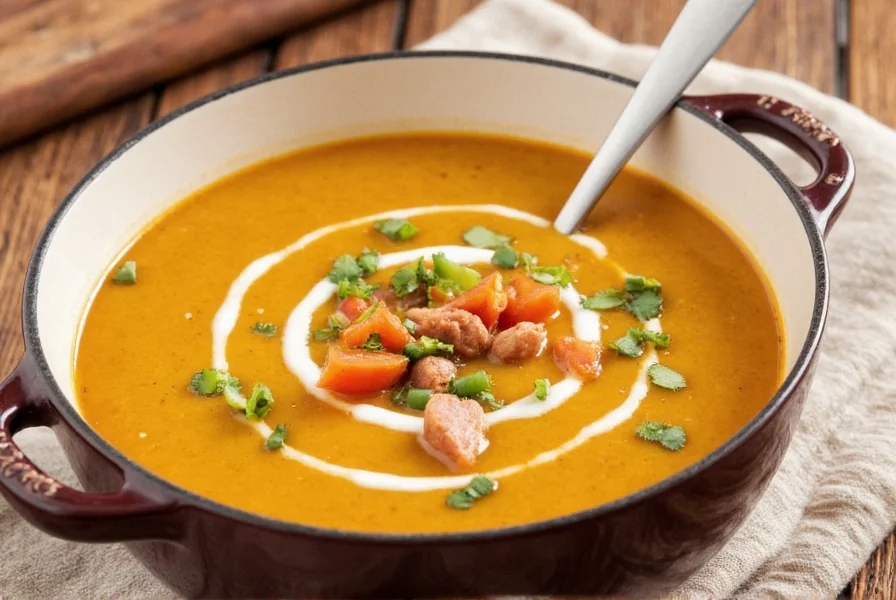
Top Herbs and Spices for Seasoning Veggie Soup
Let’s talk about the must-have seasonings for any well-stocked pantry. These are the foundational players in your veggie soup flavor orchestra:
Umami Boosters: Essential Flavor Enhancers
Umami—the fifth taste—is what gives food that savory depth. In meatless dishes like veggie soup, it’s your secret weapon to avoid blandness. Here’s how to add that magical savoriness:
- Mushrooms: Sautéed shiitake or porcini mushrooms add natural umami and meaty texture.
- Miso paste: A dollop of miso brings fermented richness—perfect for Asian-inspired soups.
- Tamari or soy sauce: Just a splash adds depth without overpowering other flavors.
- Nutritional yeast: A vegan-friendly way to add cheesy, nutty notes.
- Tomato paste: Adds sweetness and acidity, plus that deep umami punch.
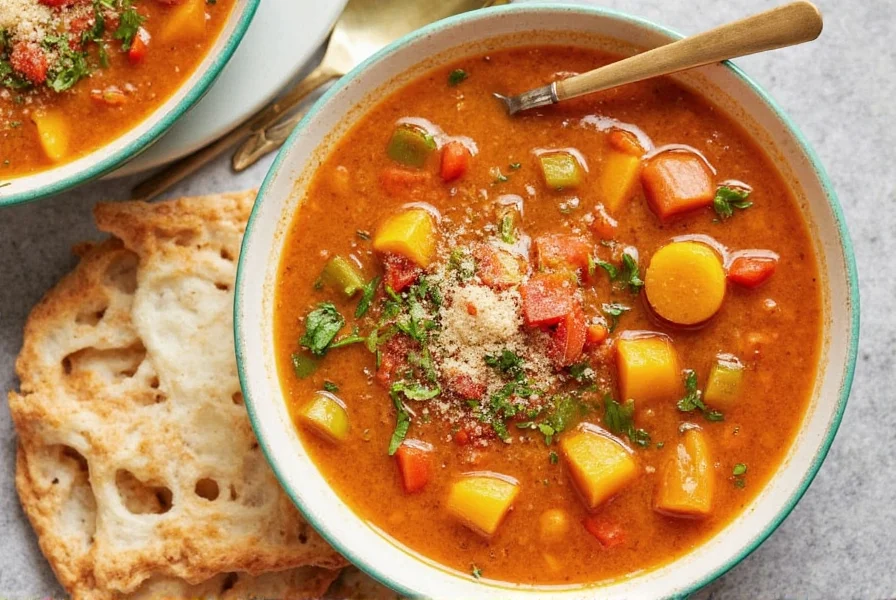
Salt Smart: Pro Techniques for Veggie Soup
Salt isn’t just for making things salty—it’s the conductor of flavor. Without it, even fresh ingredients can taste muted. But adding salt the right way takes practice.
Pro Tips for Salting Veggie Soup:
- Add in stages: Salt early (to build flavor), then taste and adjust at the end.
- Don’t oversalt: Especially if using canned tomatoes or broth, which are often high in sodium.
- Use coarse sea salt: For better control and more nuanced flavor than table salt.
- Balance with acid: A squeeze of lemon juice or vinegar after salting can brighten the entire soup.
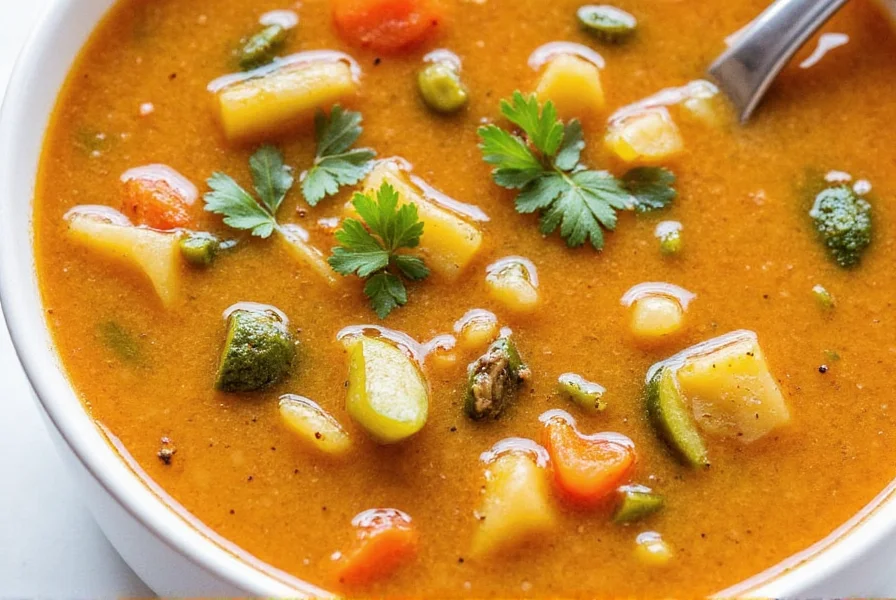
Acid & Aromatics: The Secret Flavor Duo
You’ve probably heard chefs say, "Finish with a splash of acid." But why? Acid wakes up your palate and prevents the soup from tasting flat. Pair that with the sharp bite of aromatics like garlic and onions, and you’re golden.
- Lemon juice: Perfect for finishing creamy or root vegetable-based soups.
- Apple cider vinegar: Adds tangy brightness—great for hearty soups.
- White wine vinegar: More delicate, ideal for lighter broths.
- Garlic: Sauteed gently at the start adds complexity.
- Onion or shallots: Builds the flavor base; don’t skip this step!
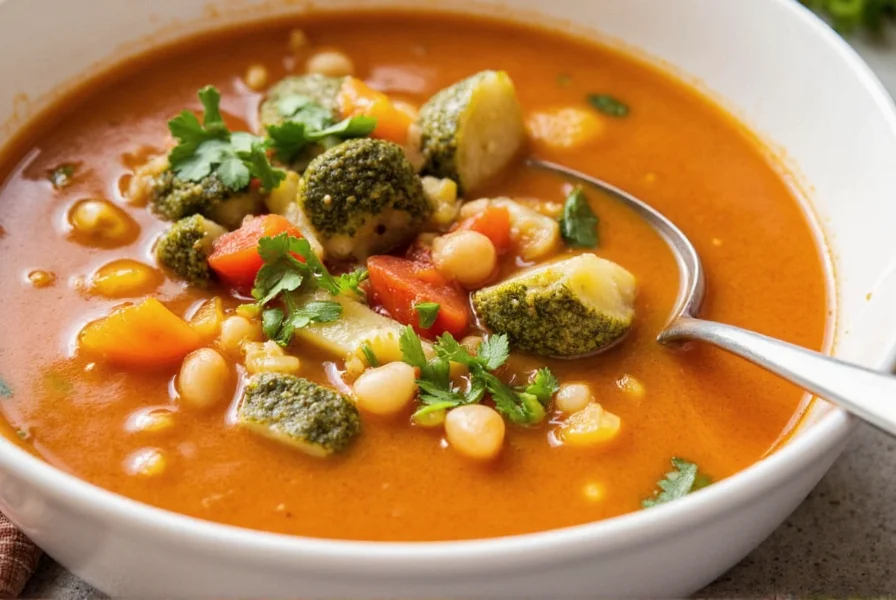
Best Spice Blends for Veggie Soup
If you’re short on time or love consistency, pre-made spice blends can save the day. They bring together multiple flavor profiles in one convenient package.
Top Spice Blends for Veggie Soup:
- Italian Herb Blend: Basil, oregano, thyme, marjoram—great for tomato or bean soups.
- Harvest Blend: Cinnamon, nutmeg, allspice—ideal for roasted squash or pumpkin soups.
- Curry Powder: Warm, earthy, mildly spicy—adds global flair to lentil or chickpea soups.
- Cajun Seasoning: Bold and smoky—adds heat and depth to robust vegetable soups.
- Herbes de Provence: Lavender-infused French blend perfect for light, aromatic soups.
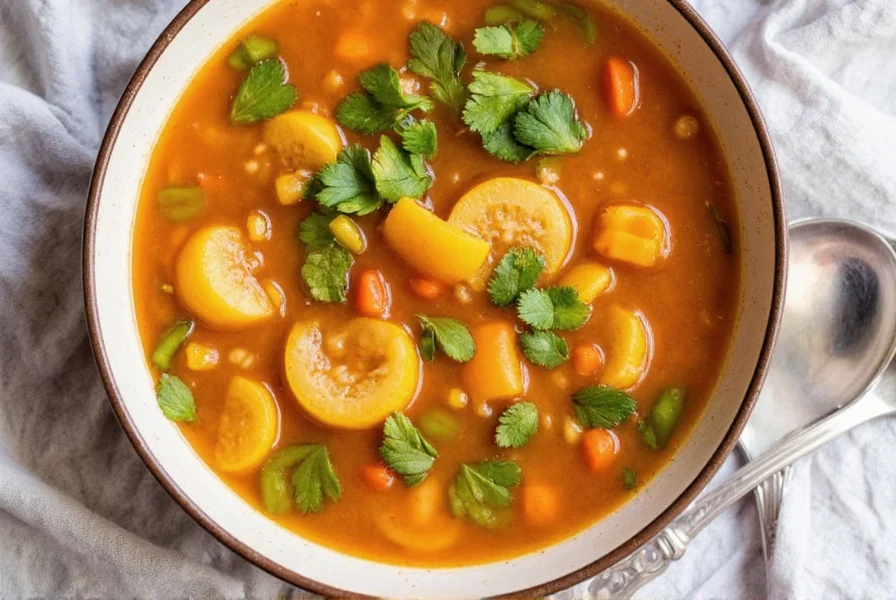
Top Seasoning Products for Veggie Soup
Not sure where to start? Here are our top recommendations for seasoning products that work beautifully in veggie soup:
| Product | Features | Advantages | Best For | When to Use |
|---|---|---|---|---|
| McCormick Italian Seasoning | Basil, oregano, rosemary, thyme | Classic, balanced flavor profile | Tomato-based or bean soups | Early in cooking or as a garnish |
| Simply Organic Mushroom Powder | Powdered shiitake mushrooms | Pure umami without additives | Broth bases, stews, chowders | Add during simmering |
| Kikkoman Miso Paste | Fermented soybean paste | Rich, savory flavor boost | Asian-inspired vegetable soups | Stir in at the end |
| Penzeys Greek Seasoning | Oregano, garlic, onion, lemon peel | Zesty, bright Mediterranean flavor | Lighter summer soups | At the end or as garnish |
| Anthony’s Nutritional Yeast Flakes | Fortified yeast flakes | Vegan, cheesy flavor boost | Any veggie soup | Before serving |
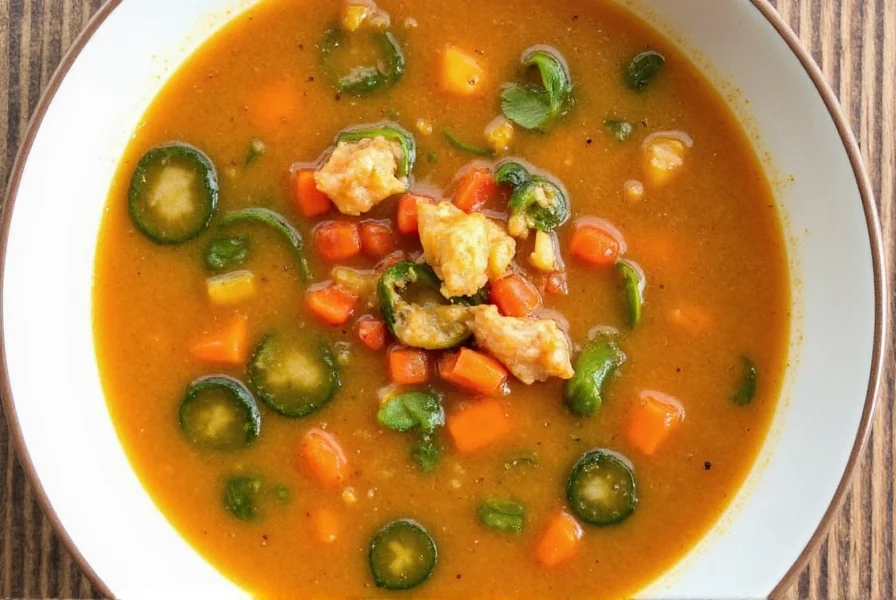
Step-by-Step Seasoning Strategy for Veggie Soup
Now that we’ve broken down the key elements, here’s a simple framework to season your veggie soup like a pro:
- Start with aromatics: Sauté garlic and onion in oil until fragrant.
- Add herbs early: Toss in hardier herbs like thyme or rosemary with the vegetables.
- Layer in spices: Add powdered spices after the aromatics bloom in oil.
- Simmer and season: Stir in salt and umami boosters like miso or mushroom powder.
- Finish with brightness: Add lemon juice or vinegar right before serving.
- Garnish for flavor: Sprinkle fresh herbs or nutritional yeast on top.
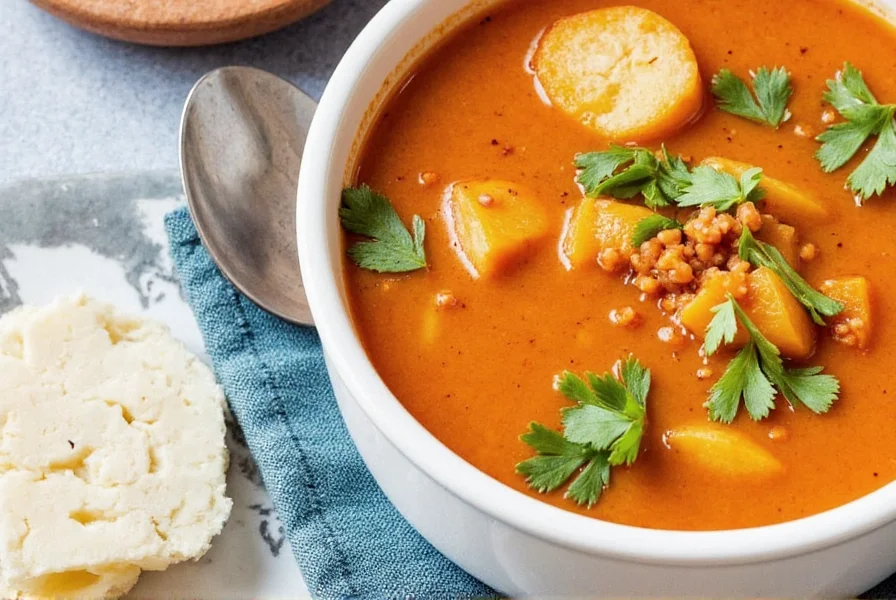
Conclusion: Seasoning is Key to Flavorful Veggie Soup
Creating a delicious veggie soup isn’t just about throwing ingredients into a pot. It’s about intention, balance, and most importantly—seasoning. By understanding how each herb, spice, and flavor booster contributes to the overall harmony of your soup, you’ll turn an everyday meal into something memorable.
Whether you're cooking for comfort, health, or entertaining friends, remember this: the magic lies not in the vegetables alone, but in how you season them. So grab those spices, experiment, and most of all—taste as you go!
Frequently Asked Questions (FAQs)
What's the best salt for veggie soup?
Coarse sea salt is ideal because it dissolves slowly and gives you better control over seasoning. Its larger crystals allow for more precise distribution compared to table salt, which contains anti-caking agents that can create uneven saltiness. Remember to add salt in stages—start with ¼ teaspoon per quart during cooking, then adjust at the end after flavors have concentrated.
How do I fix bland veggie soup?
First, add a pinch of salt and simmer for 5 minutes to see if it wakes up the flavors. If still flat, introduce umami boosters like 1 teaspoon miso paste or ½ tablespoon tomato paste. For brightness, stir in 1-2 teaspoons of acid (lemon juice or apple cider vinegar). If the soup tastes one-dimensional, add aromatic depth with a fresh clove of minced garlic sautéed in olive oil. Always make adjustments gradually and taste between each addition.
What vegan options add umami to vegetable soup?
Nutritional yeast provides cheesy, nutty notes while mushroom powder delivers deep earthiness. For Asian-inspired soups, tamari or white miso paste works beautifully. Tomato paste (sautéed until darkened) creates natural glutamates, and dried shiitake mushrooms steeped in the broth add complex savoriness. A tablespoon of soaked and blended sun-dried tomatoes also enhances umami without dairy.
When should I use dried versus fresh herbs in soup?
Use dried herbs (thyme, rosemary, oregano) early in cooking to allow their flavors to bloom in the broth. They're more concentrated, so use ⅓ the amount of fresh. Add delicate fresh herbs like parsley or dill in the last 5 minutes of cooking. For best results, rub dried herbs between your palms before adding to release essential oils. Avoid substituting 1:1—dried herbs are typically 2-3 times stronger than fresh.
Why does my soup taste flat even after seasoning?
Flatness usually indicates missing acid or improper salt layering. If you've added salt but it still tastes dull, finish with 1-2 teaspoons of acid (lemon juice or vinegar) right before serving. Another common issue is adding all seasonings at once—build layers by sautéing spices in oil first, adding hardy herbs mid-cook, and finishing with acid. Over-dilution from too much broth can also mute flavors; simmer uncovered to concentrate.
Can I over-season veggie soup?
Absolutely. The most common mistake is oversalting early in cooking, which concentrates as liquid evaporates. If soup becomes too salty, add diced potatoes or a few peeled apple wedges to absorb excess salt during simmering, then remove before serving. For overpowering spices, dilute with more broth and balance with acid or sweetness (a teaspoon of maple syrup). Always start with conservative amounts—you can add more, but you can't remove it.










 浙公网安备
33010002000092号
浙公网安备
33010002000092号 浙B2-20120091-4
浙B2-20120091-4